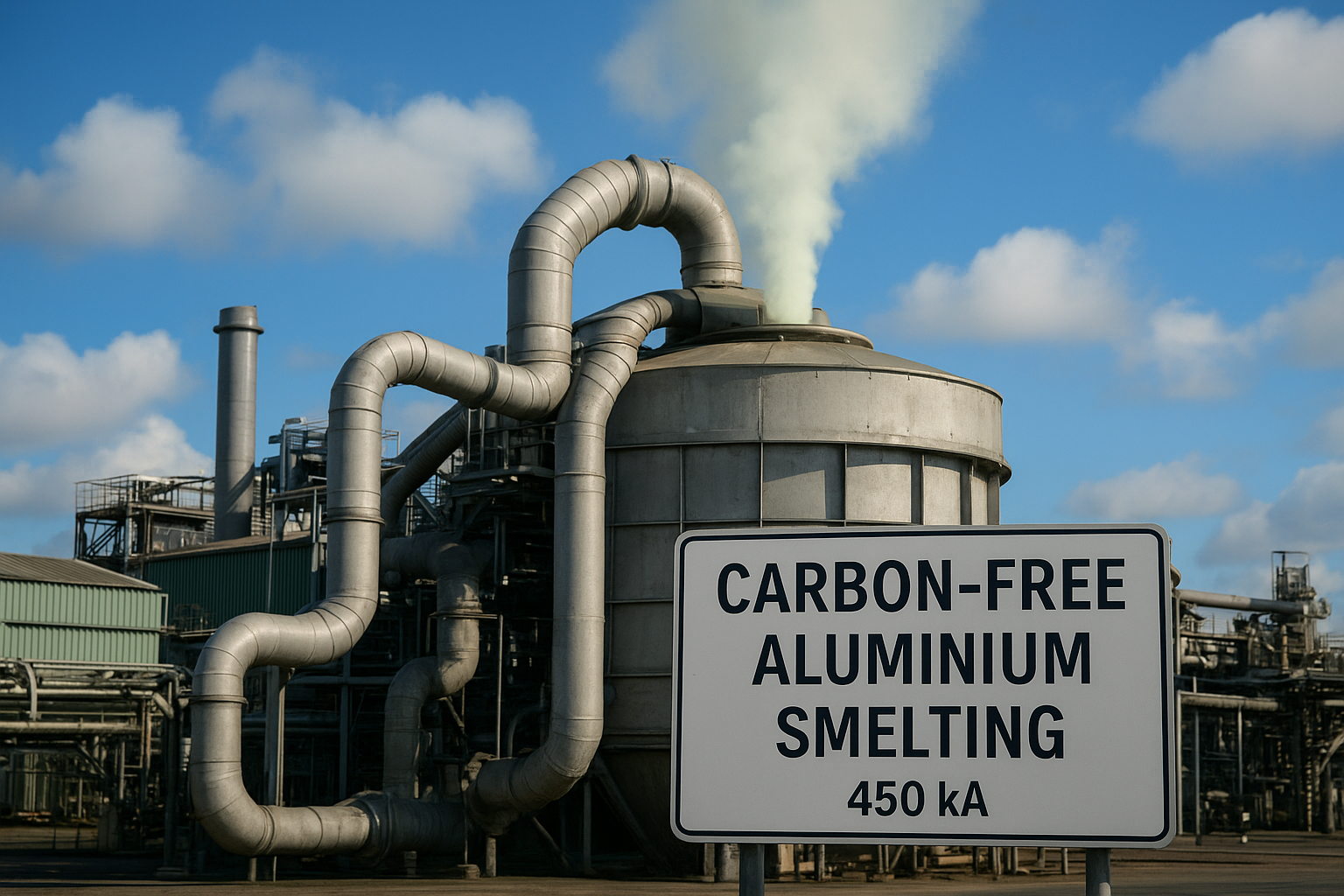The Race to Decarbonize Heavy Industry Just Scored a Major Win
In a milestone that could redefine the future of global metals production, Canada-based ELYSIS, a joint venture between Rio Tinto (NYSE: $RIO) and Alcoa (NYSE: $AA), has successfully launched a 450 kA inert-anode aluminium smelting cell at a full-scale production facility in Québec. The breakthrough, confirmed in a 13 November 2025 Rio Tinto press release, marks the first time carbon-free aluminium smelting has been demonstrated at commercial scale — a development with potentially seismic implications for both industrial decarbonisation and long-term commodity markets.
For investors watching the clean-tech and materials transition, this isn’t just a technical feat — it’s a signal that the long-discussed “green metals” revolution is entering its execution phase.
Why This Matters for Investors
Aluminium is often called the “metal of the energy transition” because of its role in everything from electric vehicles (EVs) and solar panels to lightweight aircraft and next-generation packaging. However, conventional aluminium smelting is one of the most carbon-intensive industrial processes, accounting for nearly 2% of global greenhouse gas emissions (International Energy Agency, 2024).
The ELYSIS technology replaces carbon anodes — which release CO₂ — with inert anodes, producing oxygen instead of carbon dioxide during smelting. This single innovation could eliminate over 7 tons of CO₂ per ton of aluminium compared with conventional methods.
For institutional investors and ESG-driven funds, the implications are profound:
- Regulatory Edge: With tightening emissions standards in North America and Europe, low-carbon aluminium could command premium pricing in global markets.
- Corporate Adoption: Apple (NASDAQ: $AAPL) has already sourced carbon-free aluminium from pilot-scale ELYSIS facilities for select MacBook and iPhone models, hinting at future commercial uptake.
- ESG Performance: Funds tracking Sustainable Industry ETFs or Green Infrastructure indices could see enhanced exposure opportunities as the clean-metals ecosystem matures.
The Commercial Breakthrough Explained
According to Rio Tinto’s release, the 450 kA cell represents a full industrial-scale unit, capable of producing several tons of aluminium daily — without emitting any direct greenhouse gases. The plant in Saguenay, Québec, is now operating under commercial conditions, integrating the inert-anode cells into Rio Tinto’s broader operations.
Analysts at BloombergNEF describe this as “a threshold moment,” signaling that carbon-free aluminium is now moving from pilot labs into the global supply chain.
Moreover, the partnership is backed by the Government of Canada and the Province of Québec, which jointly invested C$230 million in ELYSIS’s research and development initiatives. This underscores Ottawa’s ambition to make Canada a global hub for green industrial technology.
Future Trends to Watch
1. Scaling and Cost Parity
While the technology works, cost competitiveness remains the key barrier. Inert-anode cells must achieve energy efficiency comparable to or better than the Hall–Héroult process to gain widespread industrial adoption.
2. Strategic Partnerships
As decarbonisation becomes a corporate mandate, expect a surge in partnerships between automakers, aerospace firms, and low-carbon materials producers. Tesla (NASDAQ: $TSLA), Boeing (NYSE: $BA), and General Motors (NYSE: $GM)** are already exploring similar supply chain integrations.
3. Policy Acceleration
The U.S. Inflation Reduction Act and Canada’s Clean Technology Investment Tax Credit could funnel billions into next-gen metallurgical technologies. ELYSIS’s model aligns squarely with both frameworks, offering investors a policy-backed growth trajectory.
4. Secondary Markets and Derivatives
Analysts anticipate the emergence of a “green aluminium premium” on commodities exchanges — similar to what’s happening with low-carbon nickel and steel. Futures traders and ESG commodity funds should closely monitor early pricing signals over the next 12–18 months.
Key Investment Insight
Investors seeking exposure to the decarbonisation of heavy industry should look beyond renewables and electric vehicles. The ELYSIS breakthrough highlights a new frontier — clean metals and industrial processes that underpin the green economy.
Potential beneficiaries include:
- Rio Tinto ($RIO) and Alcoa ($AA) — early commercial rights holders.
- Hydro-Québec and related infrastructure players — supplying renewable energy to carbon-free smelters.
- ETF themes: Global X CleanTech ETF (CTEC), iShares Global Metals & Mining Producers ETF (PICK), and VanEck Green Metals ETF (GMET), all of which may gain exposure through ESG allocations.
However, scaling remains the critical challenge. Investors should watch for unit-cost data, production stability, and customer adoption rates in the next 12 months before taking aggressive positions.
Stay Ahead of the Transition
The ELYSIS success story reinforces a central theme in global markets: industrial decarbonisation isn’t a future concept — it’s happening now. As investors pivot toward sustainable infrastructure and materials, tracking innovations like inert-anode smelting could define the next decade’s winners.
For daily, data-backed insights into emerging industries and sustainable market shifts, stay with MoneyNews.Today — your trusted source for the financial world’s next big moves.





